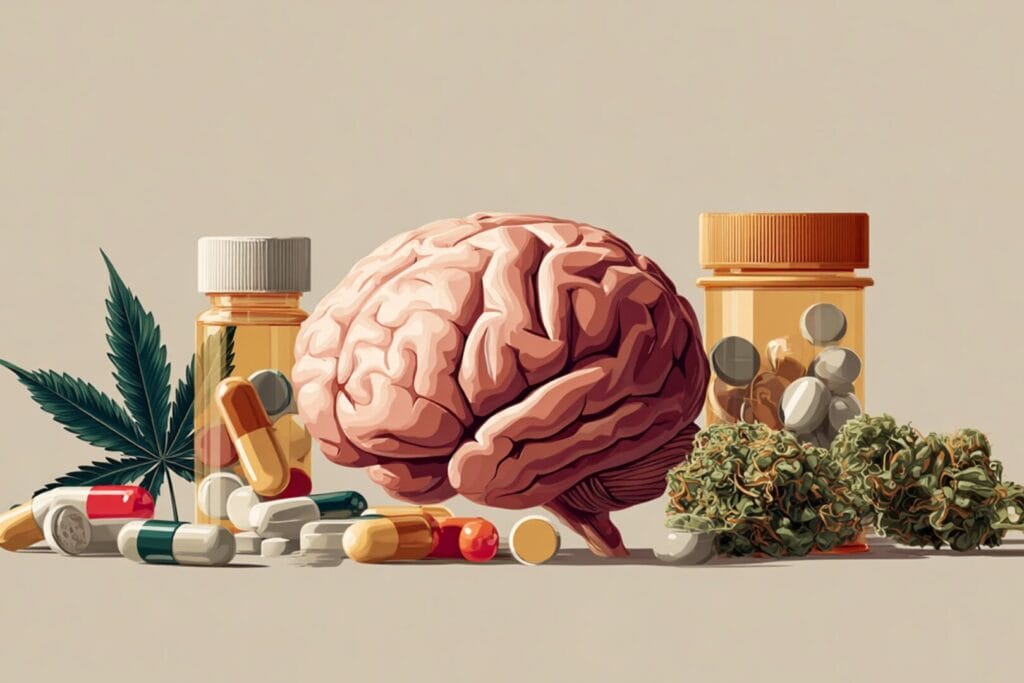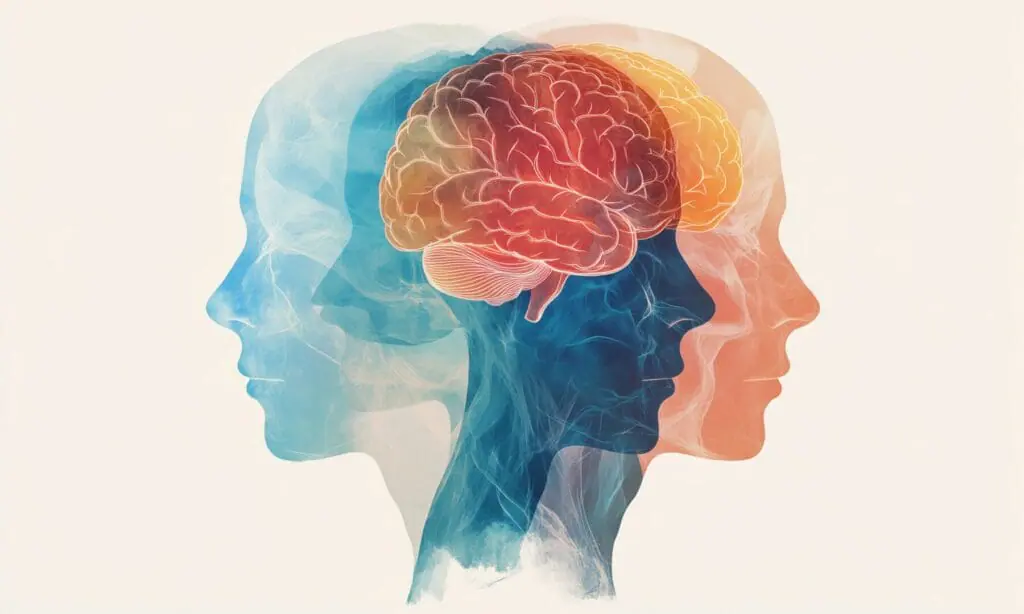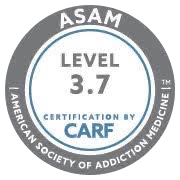Addiction recovery is easier to grasp when you see it as a series of milestones rather than one giant leap. At San Diego Detox, each initial step happens on the same Southern California campus, so you never have to uproot your routine or rebuild trust with new providers.
Physician-led care, holistic wellness programs, chef-prepared meals, and private suites work together to keep you safe, comfortable, and motivated.
By pairing evidence-based medicine with resort-style amenities, the team helps you focus on what matters most: steady progress toward a substance-free life.
In this guide, we’ll explore the first stage in depth and preview the four phases that follow, showing how San Diego Detox supports you from the moment you arrive through long-term community connections.
Stage 1: Medical Detox and Acute Withdrawal
Your first hours on campus are all about getting you safe and comfortable. A medical provider sits down with you, reviews your health history and current medications, and designs a detox plan that fits your body’s needs. Nothing is one-size-fits-all; every adjustment aims to keep you steady while the drugs or alcohol leave your system.
During detox, nurses and physicians continuously monitor your blood pressure, pulse, and oxygen levels, both during the day and at night. If nausea flares or tremors appear, they tweak medications right away and talk you through each wave of discomfort. Private rooms give you quiet space to rest while your body resets.
Round-the-clock monitoring matters because withdrawal can put stress on the heart, lungs, and nervous system. If anything concerning arises, the team is already at your bedside with IV fluids, oxygen, or other necessary medical support.
Most people complete this stage in a few days to about a week, though timing depends on what you’ve been using and your overall health.
By the time your vital signs are stable and cravings have eased, you’ll be ready for counseling, group sessions, and holistic activities that happen on the very same property. Detox clears the fog, allowing you to step into the next phase with a clear mind and a stronger body.
Stage 2: Early Recovery and Stabilization (Weeks 3–12)
Once detox is behind you, life settles into a steady rhythm on campus. The focus shifts from simply feeling safe to building the habits that keep you grounded. A doctor and the rest of the care team help you map out personal goals so every day has a clear purpose.
Mornings and afternoons often include one-on-one and group therapy sessions. In Cognitive Behavioral Therapy, you practice spotting thoughts that pull you off track; in Dialectical Behavior Therapy, you learn how to ride out big feelings without using. However, treatment isn’t just a sit-down talk. Guided mindfulness sessions, gentle yoga, and other movement classes show you quick ways to calm your body when cravings show up.
Evenings give you time to recharge. You can unwind in a private suite, have chef-prepared meals, or stroll the landscaped paths before bed. These small routines, good food, fresh air, and solid sleep quiet the nervous system and lift your mood.
Because mind, body, and spirit move forward together, you’ll leave this stage with more than therapy notes. You’ll carry a practical toolkit: breathing exercises for tense moments, stretches that loosen a tight back, grounding thoughts that keep cravings from snowballing, and a written set of long-term goals you actually believe in.
Stage 3: Skill Building and Relapse Prevention (Months 3–12)
The mental fog has lifted, and daily life is starting to feel normal again. Now the work shifts to those inevitable rough patches: an argument at home, a stressful deadline, or an invitation to “just one” drink. If you’re on Medication-Assisted Treatment, your medical provider may maintain this support to help your brain chemistry remain stable while you learn new habits in therapy.
Sessions dig deeper during this chapter. In Cognitive Behavioral Therapy, you practice catching thoughts like “I can’t handle this” before they spiral. Dialectical Behavior Therapy adds concrete tools, breathing drills, “tip the ice water,” short grounding exercises for riding out big feelings instead of numbing them. A 12-step group, SMART meeting, or other peer circle provides real-world accountability, where you learn to own your story, ask for help, and celebrate wins together.
Mindfulness remains a cornerstone. Five-minute guided scans help you spot tension before it snowballs into a craving. Many people pair these with gentle yoga flows or breath-work classes that quiet the nervous system and clear the mind.
If anxiety, depression, or trauma run alongside your substance use, dual diagnosis care keeps everything on the same dashboard. A psychiatrist or nurse practitioner checks sleep, mood, and meds so mental health symptoms don’t sneak in as relapse triggers.
You’ll leave with a playbook that truly fits your life: daily routines that keep you steady, quick tricks that defuse urges, and a short list of people you can text at 2 a.m. Add steady medication support and the friends you’ve picked up along the way, and you’ll be ready to handle curveballs without losing the ground you’ve fought to gain.
Stage 4: Maintenance and Aftercare (Year 1 and Beyond)
This phase is all about weaving sobriety into everyday life, so it feels as natural as brushing your teeth.
Most people stay connected through a mix of outpatient therapy, peer-support meetings, and regular check-ins with a medical provider. Those touchpoints keep you honest about stress levels, sleep, and mood swings, early warnings that a relapse could be brewing. Many also lean on sober-living homes, workout buddies, or faith communities to anchor new routines.
With work and family obligations ramping back up, maintaining a practical balance becomes key. You could block off 15 minutes at lunch for a mindfulness app, hit an evening support group after your kids go to bed, or swap weekend bar nights for hiking meet-ups. The exact combo is yours to design, but the goal is the same: keep recovery tools within arm’s reach.
Relapse prevention plans are also updated. You’ll refine trigger lists, add fresh coping skills, and note the people who have your back at 2 a.m. if cravings hit. Over time, these small adjustments turn early gains into long-term stability, showing recovery isn’t a finish line but an evolving way of life, one decision at a time.
Stage 5: Lifelong Growth and Community Support
Recovery doesn’t retire once you hit a year sober; it simply moves into a new chapter called “the rest of your life.” This phase is about turning every early victory into a steady way of life that continues to grow stronger.
The backbone is community. Most people stay active in some form of peer support, AA, SMART Recovery, Refuge Recovery, a faith-based group, or even a small text thread with friends from treatment. Sharing wins and setbacks in real time keeps you accountable and reminds you that relapse isn’t fate; it’s just a risk you’re trained to spot early.
Equally important are the mind-body habits you picked up along the way. Think five-minute breathing exercises before a tough meeting, a quick yoga flow after work, or jotting down three things you’re grateful for before bed. These tiny rituals lower stress hormones and give cravings less room to grow.
Many people also schedule “maintenance” check-ins with a therapist, coach, or medical provider on a quarterly, monthly, or as-needed basis. These sessions adjust medication if needed, refresh coping skills, and help you set new goals, ensuring recovery remains forward-moving and not stagnant.
Finally, give yourself room to serve. Mentoring someone newer to sobriety, volunteering at a local shelter, or speaking at a meeting can turn your hard-earned experience into fuel for someone else’s hope and double as a reminder of how far you’ve come.
Put it all together, and Stage 5 becomes a lifestyle: a community for support, daily practices for balance, and purposeful service for meaning, each piece reinforcing the others, so growth never stops.
Navigating Admissions and Next Steps
Ready to start Stage 1? San Diego Detox has a team of licensed professionals who can answer questions in real-time or connect via our online form.
A quick insurance benefits check completed while you’re on the line clarifies coverage before you pack a bag. If you’re traveling from out of town, the team discreetly coordinates flights, ground transport, and any required medical clearances, so you arrive rested and focused.
Once on campus, a bedside assessment fast-tracks your personalized detox plan the same day. From the first call to the first vitals check, every detail is handled with confidentiality and compassion, allowing you or your loved one to enter recovery without any delay.
Your Personal Path Forward
Addiction recovery is a journey, but you never have to walk it alone. From medically supervised detox through skill-building, aftercare, and lifelong community support, San Diego Detox delivers evidence-based care at every stage, all on one serene Southern California campus. If you’re ready to reclaim your health and purpose, call or chat with the admissions team today.
Your individualized roadmap can start within hours, and the expert staff will guide you step by step toward a future free from substances.
Frequently Asked Questions
1. What counts as “early recovery” at San Diego Detox?
Early recovery begins once medical detox is complete and you move into on-campus residential care. During this phase, you live in a serene environment and take part in daily evidence-based therapies that lay the groundwork for long-term sobriety.
2. How are cravings managed in those first weeks?
Physicians may prescribe FDA-approved medications as part of Medication-Assisted Treatment (MAT) to calm the brain’s reward system and reduce urges. At the same time, counseling teaches coping skills you can use between doses.
3. What tools help prevent relapse after the three-month mark?
Relapse prevention plans combine 12-step facilitation or similar peer groups with holistic practices, such as mindfulness and yoga, providing both community accountability and stress-reduction techniques that can be applied immediately.
4. How does dual diagnosis care lower relapse risk?
If anxiety, depression, or trauma fuel substance use, integrated dual diagnosis treatment addresses both issues at once, with medication management for mood stability plus therapy for coping, reducing the likelihood that mental health symptoms will trigger relapse.
5. What kind of support is available once I finish residential treatment?
San Diego Detox’s 12-step facilitation program continues to serve as a built-in alumni resource, allowing graduates to return for meetings or tap into outside AA, SMART Recovery, or faith-integrated groups that reinforce long-term growth.
6. Can holistic wellness practices still help after discharge?
Absolutely. Techniques you master on campus, such as mindfulness, yoga, and breathwork, remain effective home-based tools for managing stress and cravings. San Diego Detox encourages clients to incorporate them into their daily routine for lifelong balance.







